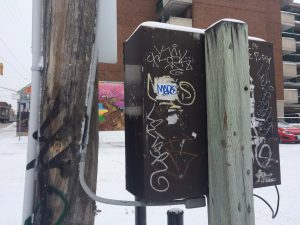By Floriane Bonneville

During Question Period last week, Conservative MP Kelly Block of Eagle Creek, Saskatchewan asked Transport Minister Marc Garneau: “Will the transport minister admit that he is selling our airports and tell us to whom he is selling them?” Some amongst the aviation community and the Opposition decry the prospect of privatizing all of the major airports in Canada.
Kevin Psutka says it wouldn’t be the first time that the Liberals privatize airports.
Psutka used to be the President of the Canadian Owners and Pilots Association and is now the Safety and Security Representative for the Air Line Pilots Association of Canada. He says the foreseen privatization of airports would be a mistake.
In the 1990s, Transport Minister Doug Young created a plan that sold most of its small and regional airports to private entities. The plan was called “National Airport Policy”.
At the time, Young said the privatization of those airports would give the incentive for the owners to be “good managers”. However, Young came to regret this decision. He told the Globe and Mail in 2003 that in the end, the airports had not been better managed by private owners and that he regretted his decision.
Psutka says he was personally involved with fighting against the privatization of airports back in 1994. He says he thought it would make airports less safe in the future, because the privatization of airport regulations makes management cut corners on safety.
In the end, he says, the less care that is put into ensuring that the airport is safe, the greater chances of accidents there are.
Apart from creating safety issues, the privatization of airports lead to the closing down of many of them.
An open database obtained through the Land Information of Ontario shows that there are roughly 64 abandoned airports in the province. Those airports closed down because of a lack of funding after the federal government walked away from managing them. The database shows that many other airports’ runways are in utterly poor conditions.
Map of the abandoned airports in Ontario
“The Government wanted to make a whole bunch of money off of them, but they realized that they couldn’t find buyers for it” says Psutka.
Psutka says the policy basically made it really expensive for municipalities or private bodies to run airports on their own.
There were also social repercussions to the closing of airports like that of Bonnechere. Among other things, it lead to the isolation of the community, says Garnet Kranz. Kranz is a resident of Killaloe who used to travel through this airport in the 1950s up until it closed. Kranz used to fly to Montreal, Pembroke, Toronto et many other places around Renfrew county. After the closing of the airport, Kranz says he didn’t travel so much anymore.
Natasha Gauthier is the Senior Media Relations Advisor for Transport Canada. She says: “work is done to transfer or sell these lands in accordance with the Treasury Board’s policies on the sale or transfer or surplus real property.” However, it is still unclear what Transport Canada plans to do with the airport.
Transport Canada didn’t mention that the Bonnechere airport site is contaminated. Like many other airports built in the Second World War. Archives from the government of Canada shows that the airport’s contamination is of medium alert and so nothing can be dug from its ground because it could eventually spread out.
That is also why the Pikwaknagan land claim does not want to have anything to do with the airport site, Councillor Ron Bernard says.
When she was asked whether the airport would ultimately simply sit there for eternity until it degrades itself, Gauthier did not reply. When asked the same question, Psutka responded with a vivid “Yes”. Bernard says that he doesn’t know.















